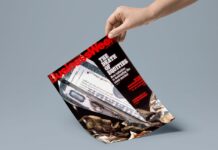
Global markets fell sharply in Q1, infected by the COVID-19 pandemic, with most ending deep in the red.
Q2 heralded a bounce-back. The S&P 500 index rallied almost 20% in Q2, propelled by unprecedented fiscal and monetary stimulus, while the MSCI World index trimmed its year-to-date losses from -21.05% in Q1 to -5.77% in Q2.
The MSCI EFM Africa ex-SA index also improved steadily in Q2, but with less upward momentum, ending the first half -19.87% in the red after recording a -27.68% YTD deficit at the end of Q1.
Of the 10 indices we report on in Africa, ex SA, all but Zimbabwe’s ZSE Industrial Index ended Q2 lower than at the start of 2020.
In the latest chapter of Zimbabwe’s troubled economic history, on June 29 the government suspended trading on the ZSE, citing alleged illicit activities.
Zimbabwe’s ZSE Industrial Index had risen 49.77% in June to finish 666.03% in profit YTD, having gained 97.36% in Q1. The country’s Resources index meanwhile recorded an off-the-charts gain of 1,465.26% YTD as investors sought cover from inflation, running at around 786%, according to Bloomberg.
The SEMDEX in Mauritius had the dubious distinction of being the worst performer in our basket for the year so far, ending 23.63% in arrears for the first half, up from a -27.84% deficit in the first quarter. With the services sector accounting for three quarters of GDP, the COVID-19 pandemic struck a particularly grave blow to tourism and also impacted the burgeoning financial-services sector.
Egypt’s EGX30 Index dived -31.28% in Q1 2020 and ended Q2 -22.9% in arrears, boosted by a 6.48% gain in June.
Kenya’s NSE All-Share Index (NASI) ended Q1 -19.95% behind, and by the end of June the year-to-date loss had been trimmed to -17.73%. Dividends paid out to multinationals for their controlling stakes in NASI-listed firms were set to drop by more than 20% in 2020, africanmarkets.com reported.
The Morocco All Share Index (MASI) gained 3.21% in June to finish Q2 -16.45% underwater for the year so far, compared to -20.27% negative at the end of the first quarter.
Ghana’s GSE All share index finished -4.36% behind at the end of Q1 but plunged further in Q2 to end -15.83% in arrears YTD.
The Nigeria All Share Index gave back -3.12% in June after rebounding 9.76% in May. Year-to-date losses were reduced to -8.8% by the end of Q2 compared to a -20.65% deficit in Q1.
Zambia’s Lusaka All Share Index ended only -0.74% in arrears at the end of Q1 but, like Ghana’s GSE, also bucked the broadly positive trend in Q2 to settle -8.09% in deficit on the year.
Tunisia’s TUNINDEX gained 2.15% in June to finish the quarter at -6.94% in arrears YTD, up from -8.97% at the end of Q1.
Botswana’s Gaborone Index slipped -1.37% in May and a further 2.24% in June to finish -4.47% in arrears yeare to date having been -0.09% in the red for Q1. Copyright. HedgeNews Africa – July 2020.
| 2020 | 2020 | 2020 | 36 month | |
| Index name | Q1 (%) | Q2 (%) | YTD (%) | % |
| MSCI World | -21.05 | 19.36 | -5.77 | 6.70 |
| MSCI EFM Africa ex-ZA | -27.68 | 10.71 | -19.87 | -5.17 |
| MSCI Emerging Markets | -27.68 | 18.08 | -9.78 | 1.90 |
| Botswana – BSE DCI | -0.09 | -4.38 | -4.47 | -6.72 |
| Egypt – EGX30 | -31.26 | 8.36 | -22.90 | 17.67 |
| Ghana – GSE All Share | -4.36 | -11.47 | -15.83 | 10.99 |
| Kenya – NASI | -19.95 | 2.22 | -17.73 | 15.40 |
| Mauritius – SEMDEX | -27.84 | 4.21 | -23.63 | 4.78 |
| Morocco – MASI | -20.27 | 3.82 | -16.45 | 7.69 |
| Nigeria – NSE | -20.65 | 11.85 | -8.80 | 17.93 |
| Tunisia – TUNINDEX | -9.97 | 3.03 | -6.94 | 6.74 |
| Zambia – All share index | -0.74 | -7.35 | -8.09 | 16.43 |
| Zimbabwe – ZSE Industrial | 97.36 | 568.67 | 666.03 | 80.17 |
Data sources: RisCura, MSCI, Bloomberg, africanmarkets.com



